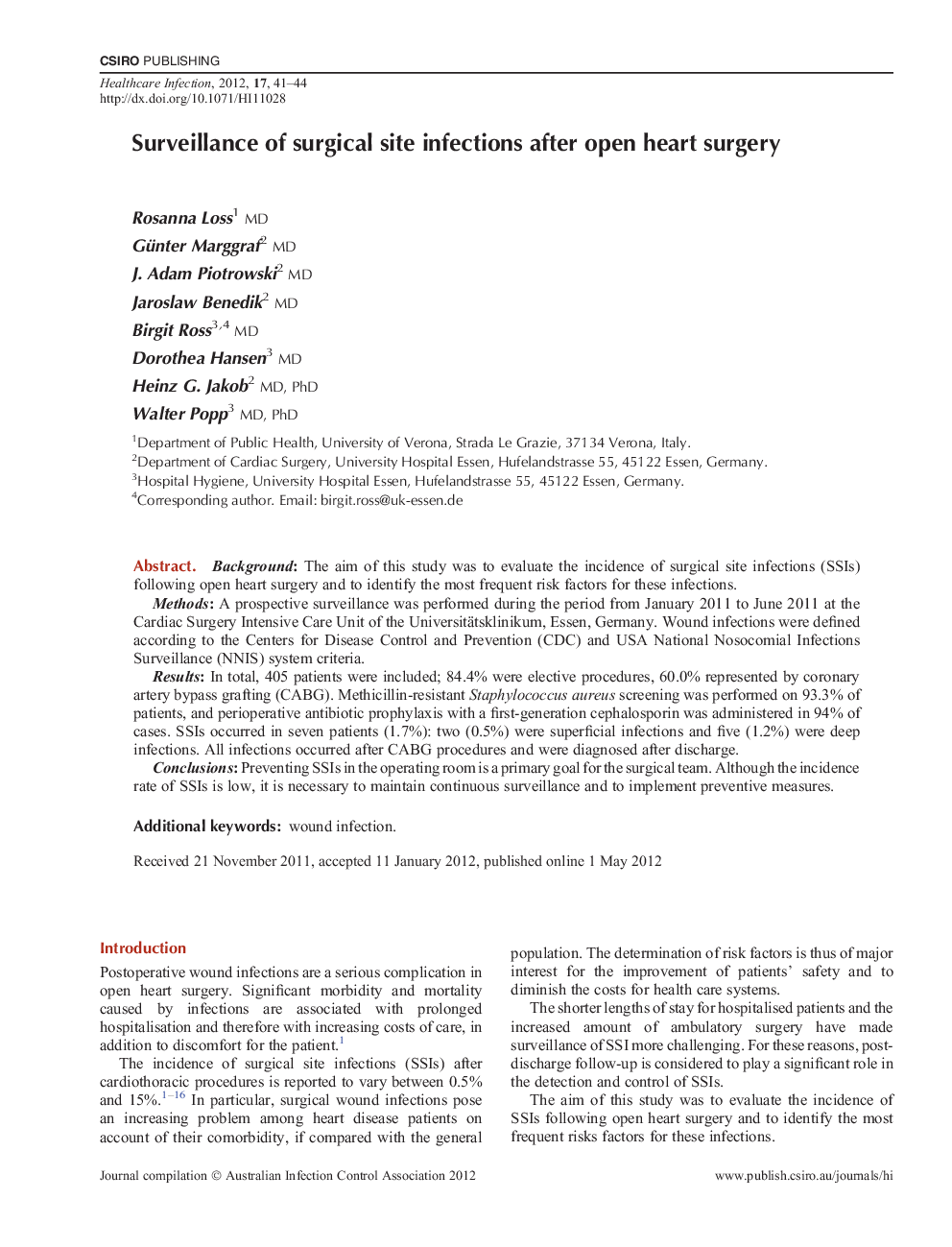| Article ID | Journal | Published Year | Pages | File Type |
|---|---|---|---|---|
| 2682841 | Healthcare infection | 2012 | 4 Pages |
BackgroundThe aim of this study was to evaluate the incidence of surgical site infections (SSIs) following open heart surgery and to identify the most frequent risk factors for these infections.MethodsA prospective surveillance was performed during the period from January 2011 to June 2011 at the Cardiac Surgery Intensive Care Unit of the Universitätsklinikum, Essen, Germany. Wound infections were defined according to the Centers for Disease Control and Prevention (CDC) and USA National Nosocomial Infections Surveillance (NNIS) system criteria.ResultsIn total, 405 patients were included; 84.4% were elective procedures, 60.0% represented by coronary artery bypass grafting (CABG). Methicillin-resistant Staphylococcus aureus screening was performed on 93.3% of patients, and perioperative antibiotic prophylaxis with a first-generation cephalosporin was administered in 94% of cases. SSIs occurred in seven patients (1.7%): two (0.5%) were superficial infections and five (1.2%) were deep infections. All infections occurred after CABG procedures and were diagnosed after discharge.ConclusionsPreventing SSIs in the operating room is a primary goal for the surgical team. Although the incidence rate of SSIs is low, it is necessary to maintain continuous surveillance and to implement preventive measures.
